Juxtapoz Magazine
"BLOOD: Miniature Paintings of Sorrow and Fear"
By Chuck Amok
Sept / Oct 2003
Mark Ryden has recently moved his infamous studio to the top of the famous, allegedly haunted, Castle Green hotel in Pasadena, California. I couldn’t wait to meet the mysterious Mr. Ryden; king of the current pop narrative movement the "Art World" can’t shake. I had so many questions I couldn’t wait to ask him, questions like, what is the significance of the fact that Abraham Lincoln and Christina Ricci were both born on February 12th?
It was a particularly hot day when I visited his studio at the historic landmark. Castle Green was built in 1899 and originally served as a popular resort hotel for upper crusties of another era. I approached the iron gates of the vast Victorian mansion and pushed the buzzer. As I waited for a reply, I happened to look up to the uppermost balcony. There I saw a mysterious figure, dressed all in black. It has been rumored that Mr. Ryden only wears black and indeed, only eats black food. The gates opened themselves and I walked through the garden, heavy with the lush scent of shaven lawn. The castle stood imposingly before me. It seemed strange that such a large building could be so silent. I walked up the veranda stairs, and into the cool, dark, elegant lobby. A pale, morose elevator man, who seemed more like an undertaker, greeted me there.
"I am here to see Mr. Ryden," I said.
"Yes, follow me", he answered, in a monotone.
I wondered if I was I awake or in some kind of haunted 50’s B movie as he escorted me into his iron cage elevator. While we ascended I could feel my heart pounding in my chest. I was surprised by my own exaggerated anticipation. It was a long silent ride to the top of the building, and the undertaker did not make eye contact.
Then, as so few people are ever given the chance to, I entered the studio of Mark Ryden. There was almost too much to take in. It was a beautiful space, somewhere between the New York Museum of Natural History and the Vatican, with a little of Pee Wee’s Playhouse thrown in. To my left a huge wooden chinese lion growled at me. To my right a wee Abraham lincoln, surrounded by plastic angels, held out his hand. Mr. Ryden was at a table; his back turned to me. On the table were numerous bottles of unknown substances and strange apparatuses. There was a peculiar odor in the air and I could hear a bubbling sound. I was very curious about what he was doing, but suddenly my attention was pulled to the other side of the room. There I saw with my own eyes the famous Magic Monkey. He stood on his pedestal, majestic and at the same time utterly freaky. I couldn’t believe I was really there.
Composing myself, I cleared my throat. Mr. Ryden turned. He was indeed dressed in black, wearing a long priest-like coat. The thing I could make no sense of and will haunt me to my dying day was the clown mask he was wearing. He removed it as if this was a normal thing to do. "Hello" he said to me, in a kind voice, and our interview began.
"Why blood?" I asked him.
"Sometimes life can be very dark. I’ve been going through a very difficult time," he replied. "Last year, after 14 years of marriage, my wife asked me for a divorce. Anybody who has been through a divorce knows how horrible it can be. With in a year’s time I lost some of the most important things in my life. I lost the financial security I had worked for years to achieve. I lost a beautiful home I worked so hard to own. But, of course, worst of all, I lost my family. I am allowed to be with my children on Tuesdays and every other weekend, but that is quite different from the relationship we had when I was with them everyday. It is brutal to have your dreams shattered. The hopes you have for your life and family get torn apart and it causes a pain very deep inside. I found it curious that there was no blood with my trauma. It seemed like with so much pain I should be covered in blood. I wanted to be able to see my wounds, but they were not on the surface of my flesh."
I was taken aback by his candid response.
"I did not want to hide why I did these paintings," he said. "I know it might seem like a very personal thing to share with the world. I suppose most people are surprised, but I think the world would be a better place if more people didn’t hide their pain. We all have pain. It is comforting to know we are not alone in it. That’s why I had the Blood Show open in Los Angles on my wedding anniversary,"
"Not only was the opening on your anniversary but on that very night Mr. Bush started his own "Blood" show. He began dropping bombs on Iraq within minutes of the start of your opening. Was this an eerie coincidence?"
"Yes, very eerie and very sad. As much as it should not have surprised me I could not believe Bush actually went and did it. He is making this world into a very frightening place."
"Do you see the world as filled with only ‘Sorrow and Fear’?"
"There is a very dark and painful side to life, but that is natural. People in our culture think they shouldn’t ever be unhappy. They think being unhappy is unnatural. They try and make it go away. They take pills or they go to therapy to "fix" themselves. They blame themselves or others for their suffering. We need to understand that sadness is as much a part of this life as joy. It would be easy to just get bitter and cold while focusing on the dark side, but there is also an amazing, wonderful side of life. If you look for it, there is true magic all around us. Maybe that sounds trite to the hardened self-protective modern ego, but there is magic in this miraculous life. If you open yourself, you do make yourself vulnerable to pain. But the deeper pain you experience, the deeper joy you can have."
"These paintings seem to combine darkness with a certain amount of humor."
"There is a serious side to these paintings and there is also a side inspired by The Haunted Mansion. There is real pain and there is also something else that isn’t just irony. I include "lowly" pop culture influences in my art without an attitude of ironic judgement. I can see the sublime beauty in a cheap toy package and I can see the kitsch qualities in the loftiest work of art in a museum. These things coexist in life and can coexist in a painting. Critics who think a "higher truth" can only be found in obtuse, elitist art are just as full of shit as those who think artists shouldn’t go to college and should have lots of tattoos. "
"Some of the paintings are only a few inches big. Why did you paint them in miniature?"
"Making these paintings at such a tiny scale captured the right tone. I didn’t want them huge and screaming blood. I didn’t feel like doing that. My intention was much more quiet and introspective. I wanted them to be more of a whisper."
"Blood usually can’t whisper, by nature it screams."
"Blood is very powerful. While meat is the substance that keeps our living souls in this physical reality, blood keeps our meat alive. Blood is liquid life. When blood escapes our bodies we are alarmed to the very core of our brains. It is life leaking out of us. It is frightening and makes red a profoundly intense color. "
"Is that why you covered the gallery walls with red velvet drapes and had everyone wear red to the opening?"
"Yes. I liked the mood it created. Adding further to the mood, Stan Ridgway created a "Soundtrack" for the show. I have loved Stan’s music for many years, and it was such an honor to work with him. We met at my Bunnies and Bees show last year. We were dancing around the booze hole, and he came up with the idea to make music to go with my art. It is extraordinary that it actually came to be. Stan and his wife, Pietra Wexstun, created a special composition to go with each painting. Their beautiful music added a great deal to the experience of seeing the show."
"Just one more question, Mr. Ryden. What is the significance of the fact that Abraham Lincoln and Christina Ricci were both born on February 12th?"
At this point in the interview Mr. Ryden’s attention seemed to wander. He slowly replaced his clown mask and fell silent. Realizing the interview was over I gathered my things, walked out of the studio, and rang for the elevator.
Shooting Low, Aiming High
by Holly Meyers
March 16, 2007
The opening reception for Mark Ryden’s new exhibition, “The Tree Show” at Michael Kohn Gallery, was six hours long. If you glanced at the invitation beforehand, you might have thought this was a misprint. Six hours? Two is customary. Three is generous. Six, you might be forgiven for concluding, falls somewhere between pointless and pretentious. But then you would be seriously underestimating both the breadth and the fervor of Ryden’s fan base. In fact, the extension was merely practical.
At 3 p.m. on Saturday, midway through the opening, a line stretched out the back door, down Crescent Heights and around the corner onto Beverly. By the time the gallery closed its doors at 6, the guard who’d been hired to manage the flow had counted 2,222 visitors — this in addition to the 220 who’d attended the private preview two nights before. (All those twos make a curious pattern for an artist with a professed interest in numerology.) Kohn associate Samantha Glaser confirmed later over the phone that Ryden himself had been there throughout, milling with admirers and signing autographs. Each time I’d seen them in the course of the week leading up to the show, Glaser and other gallery staff appeared to be wavering between exhilaration and exhaustion, taken aback by the machinations of a network they weren’t used to handling and didn’t entirely understand. Ryden, on the other hand, was clearly in his element. “Oh, he’s having a great time,” Glaser said. “He’s just in heaven!”
The show is a kind of debut for Ryden, or, depending on your vantage point, a departure: his first in a gallery that bears no affiliation whatsoever with the disparate “underground” community collectively known as Lowbrow. (Other Kohn artists include Walton Ford, Bruce Conner and Reed Danziger.) His last dealer, prior to 2003, was Earl McGrath, whose historically “mainstream” gallery took a Lowbrow turn a number of years ago and has shown Josh Agle (Shag), Gary Baseman, Chuck Agro, Andrew Foster and Eric White. In the past, Ryden has shown solo at Mondo Bizzarro in Bologna and Outre in Melbourne, and in group shows at Roq La Rue in Seattle, CoproNason in Culver City (the gallery has since moved to Bergamot Station), Merry Karnowsky on La Brea, and, of course, La Luz de Jesus in Hollywood — all galleries that wear their outsider/underground/post-pop/pop surrealism (whatever you want to call it) credentials on their sleeve. A midcareer retrospective co-organized in 2004 by the Pasadena Museum of California Art and the Frye Museum in Seattle — a show that broke attendance records in Pasadena — began to point the way toward a broader sort of recognition. The show at Michael Kohn, it seems, confirms it: The high prince of Lowbrow — known for his incomparable skill, his often shocking price tags, and his capacity to sell out just about anything — is ready for some attention from the art world.
“He didn’t come to us because he needed to sell paintings,” Kohn told me shortly before the show went up. “He had no problem selling paintings. He came to us because he wanted to be selling paintings to the ‘right’ people.”
Kohn’s slightly guilty inflection on the word right points to the awkwardness at play here: There are significant differences — not only aesthetic but social, institutional and philosophical — between the world of Lowbrow and the mainstream art world, but any attempt to examine these differences tends to bring out the worst in both. Few in the mainstream art world care to look too closely at the elitism of which they’re often accused, just as few on the Lowbrow side care to address the dangers of blind aesthetic populism. So, like feuding siblings they keep to opposite sides of the room, each professing indifference while privately coveting some aspect of the other.
Lowbrow is popular (within a particular range), theatrical, fun and often lucrative. It fosters figuration and narrative — qualities that were, until recently, widely scorned in the contemporary art world — and rewards rather than questions the development of technical skill. Operating largely outside the scope of critical discourse, it enjoys a high degree of freedom. It can afford to be funny, it can afford to be crass. And Lowbrow artists have fans — passionate ones. What mainstream artist can boast of a MySpace group organized “for anyone who has had their life altered by the magnificent and profoundly magical Mark Ryden”? Those in the art world, on the other hand, have access to a kind of prestige that no amount of popularity — or celebrity patronage — can buy. By aligning themselves, more or less, with an established historical trajectory, and playing to the terms of an established critical discourse, these artists forsake a certain freedom but increase their opportunities for serious — and lasting — recognition.
There are numerous artists who enjoy some degree of crossover but few who straddle the divide quite as cleanly as Ryden. Combining the pictorial accessibility of Lowbrow with the weight of art-historical awareness, layering seductive technique over an increasingly mystical conceptual framework, Ryden makes work that plays by both sets of rules, without, impressively, seeming to bow to either.
“These pictures,” Kohn remarks, “are just extraordinarily well painted. And they’re weird enough to be interesting. I’ve noticed among my colleagues — a lot of my colleagues out in New York, who deal with more conceptually based work — that looking at Mark’s work used to be a guilty pleasure. I saw them coming by my booth in the Miami Basel Art Fair and oohing and aahing over this extraordinarily seductive painting. This was not their normal fare but they liked it anyway. Now, little by little, it’s shifting. A guy who bought one of the works in this show collects Diebenkorn and Thiebaud and John Currin and some contemporary photographers — not just figurative work but mainstream contemporary work, and now that also includes Mark Ryden. Now people can finally do it guilt free.”
That Ryden will get the attention of the art world is all but assured: He’s simply too talented, too rigorous and — more to the point — too savvy an artist not to. More interesting, then, is the next question: What does it mean for a serious contemporary artist to be popular?
With his thin brown hair falling now to his shoulders and strands of gray winding through the long, spindly beard that extends from his chin, the 44-year-old artist has the air of one passing into an assured, if by no means complacent, middle age. The polished, Victorian dandy you’ll find in the portrait posted on his Web site has given way, it seems, to the image of a tousled, affable, slightly mischievous wizard. The most striking thing in meeting him is how little his worldly success appears to have impeded the fundamental generosity of his character. Whether fussing over details of the installation, discussing his work with me over lunch, or mingling with friends and collectors at the preview, his demeanor is soft-spoken, modest and warm. If there is an edge to his character somewhere — the sort of edge you might expect in one who more or less independently steered his career into such a daunting price bracket — I never saw it.
What does emerge, occasionally, beneath the air of affable equanimity are suggestions of an uncommonly rigorous work ethic. “I used to be a night owl,” he says when I ask about his daily practice. “I’d work really late and sleep in. Now I wake up really early, for some reason, and I work late.” He laughs.
“I’ve been working really hard on this show,” he adds, “for a long time.”
It shows. Several years in the making, “The Tree Show” is Ryden’s most involved undertaking since “The Meat Show,” his solo debut in 1998. (“I like themes,” he says.) There are several dozen works in all, ranging from small preparatory drawings to the spectacular Tree of Life, a 7-foot-by-4.5-foot-tall painting encased in an astonishingly intricate wood frame, designed by Ryden, that apparently took four men in Thailand nine months to carve. In addition to the numerous canvas paintings, there are also portraits made on cross sections of tree trunks, an 8-foot-tall treelike sculpture with an elaborately festooned forest spirit doll enshrined in its trunk, and an installation containing a plethora of objects — toys, books, souvenir pennants — from Ryden’s personal collection, continuously circled by a moving toy train.
The visceral impact of the work — and thus, much of its popular draw — derives largely from a profound sense of personal investment. As gallery director Lisa Wells points out while we waited for Ryden to repair the clasp on a door at the back of the sculpture, there is no aspect of the show, from the imagery to the frames to the memorabilia to the invitation (a clever, foldout contraption that stands upright on a desk) and the miniature felt pennants he had manufactured for the show, that isn’t specific, considered and exacting. “I keep looking for a slip somewhere,” she says, “but I haven’t found it. He just doesn’t cut corners — anywhere.”
Between the cheerful quality of his presence, the confidence of his new work, and the charm of his banter with artist Marian Peck, his partner of four years, one gathers that Ryden is in an especially good place at the moment — a fact that threatens to revise his reputation as a poet of the macabre.
His last gallery show, at Earl McGrath in 2003, came together just after the dissolution of his 14-year marriage and was tellingly titled “Blood: Miniature Paintings of Sorrow and Fear.” The walls were draped in red velvet. In the 11 small paintings on display, blood flowed from the eyes of bewildered children, drained from a stigmata onto the head of a naked infant, spurted from the neck of a decapitated ballerina, and tinted the water in which a blond waif stood submerged, seeping from a gaping wound in her chest. The severed head of Abraham Lincoln sat at the foot of a bed, staring wistfully, staining the sheets.
Speaking in an interview with Juxtapoz magazine published around that time, Ryden was candid about the show’s emotional undercurrent. “I’ve been going through a very difficult time,” he said. He’d lost his marriage, his home, daily access to his two children. “It is brutal to have your dreams shattered,” he said. “The hopes you have for your life and family get torn apart and it causes a pain very deep inside. I found it curious that there was no blood with my trauma. It seemed like with so much pain I should be covered in blood. I wanted to be able to see my wounds, but they were not on the surface of my flesh.”
Ryden scheduled the “Blood” show, rather perversely, to open on the date of his wedding anniversary — which was also, eerily, the day the U.S. began to bomb Iraq.
The current show, by contrast, is all about life. Indeed, the only trace of blood appears in a sort of birth scene: Abraham Lincoln pulls an infant, still suspended in a placenta-like sack, from a red, vaginal slit at the base of a tree. The only somewhat violent image is one in which a little girl is swallowed by a tree, and even that, though peculiar, seems not such a bad fate. In a drawing a little farther on, another girl (or is it the same?) appears cozily curled in the belly of a tree, hiding.
“The show is about our relationship with nature,” Ryden explains over lunch. “There are many different parts to it, but you know, some people look at these massive trees and feel a sort of spiritual awe looking at them, and then other people just want to cut them up and sell them. It’s amazing how people can look with such different screens. Some see a tree as a commodity, an inanimate material to use for themselves, or even worse like it’s some kind of heroic thing to cut down this tree that’s taken 2,000, 3,000 years to grow. Like in the vintage photos of these lumberjacks, when they line up — it’s just mind-boggling how they do that. And it’s mind-boggling that it’s still going on today.”
The little girls are, even more than in past series, the soul of this new work — the surrogate through which Ryden appears to be exploring the human experience of nature. Some have the air of spirits or symbols, as in Allegory of the Four Elements, an especially beautiful painting of four girls — earth, air, fire and water — seated around a tree-stump table. Others are distinctly human, with a simpler and more innocent air than many of Ryden’s previous darlings, but with a sensitive, intensely inquisitive connection to the world around them. Many of the kitschier items in Ryden’s trademark repertoire appear to have fallen away in this work, including most of the toylike figures. The compositions, which New York Times critic Grace Glueck grumbled in 2001 were “so compulsively packed with nutty detail as to try the eye severely,” have aired out considerably. These are positive improvements. What might once have been classified as a giddy effusion of precocious pop — a quintessential expression of the now prevalent term “pop surrealism” — seems to be drifting now toward a kind of narrative mysticism, informed less by consumer culture and Americana than by Ingres, David, the old Dutch and Flemish masters, and the painters of the Italian Renaissance (to list a few of the artist’s professed influences).
Because Ryden’s most obvious affiliations up to this point are traditional Lowbrow strongholds, it’s easy to overlook some equally compelling connections on the other side of the fence: namely the development on various fronts of an exaggerated realism.
“There is a context for Mark’s work,” as Kohn says, “whether it’s arisen in a parallel way or whether it’s come out of a movement. There is a definite relationship to, you know, John Currin, to Lisa Yuskavage, to Murakami, to Nara, to Barry McGee.”
Ryden accepts this characterization to a point.
“There’s definitely something going on,” he says, “and it’s all tied together. There’s a common interest in, you know, what stuff looks like, more than just what the concept behind it is. It’s not devoid of ideas, but it’s concerned with what the work looks like too. So, you know, I share that. I get lumped in with a lot of artists that I kind of wonder how people see me as a peer to them but . . .”
On the whole, however, the question of context seems not to interest him.
“I think it’s important as an artist not to think about where your place is in all that. I think it just freezes you up — I try not to think about it at all. If you start to evaluate: Am I doing something fashionable, am I doing something that fits in with the times, am I doing something new that hasn’t been done before — it will just freeze up the creative process. I’m so lucky that people respond to my art, but if I think about that it’s hard to, ah, make any art.”
Ryden may be wary of discussing his own position in the art world, but he’s animated on the subject of William-Adolphe Bouguereau, the 19th-century French painter.
“Do you know Bouguereau?” he asks. “He’s one of the most hated artists ever. He’s also one of the most skilled artists ever. He paints flesh better than any artist, I feel. I don’t think his paintings are the best paintings ever. His content is peasant girls, beautiful peasant girls, and it offends so many people, so many people just hate him with a passion — but they’re painted so well. Especially for an artist, to look at just that application of paint mimicking flesh — it’s just mind-boggling, how amazing it is. People now want to know how to do that, they can appreciate it.”
The more he talks, describing a debate the Getty organized on the subject of Bouguereau last summer, the more personal his account begins to sound.
“He was hated for being very successful in his time,” he says. “It’s very respected to be insane like Van Gogh and never sell a painting — that’s a respectable way to be an artist. But to actually be successful with it and make good money is a sin.”
If one purpose of “The Tree Show” is to introduce Ryden to a new level of collector, this was accomplished before the exhibition even opened: The show, predictably, was sold out before the preview. The buyers, Kohn says, were American, primarily, and there are MOCA trustees among them. Allegory of the Four Elements was sold within moments of the opening of the Art Basel Miami fair in December, to a Colorado collector for $300,000. Tree of Life went for a whopping $800,000, the sculpture for $500,000. In an absurdly convenient stroke of symbolism, the preview’s guests included both Billy Shire, L.A. Lowbrow’s wizened patron saint (founder of La Luz de Jesus and Billy Shire Fine Arts), and the effortlessly elegant Ann Philbin, director of the city’s most significant “mainstream” contemporary-art institution, the Hammer Museum. They’d not, apparently, met.
Mark Ryden | “The Tree Show” | Michael Kohn Gallery, 8071 Beverly Blvd., L.A. | (323) 658-8088















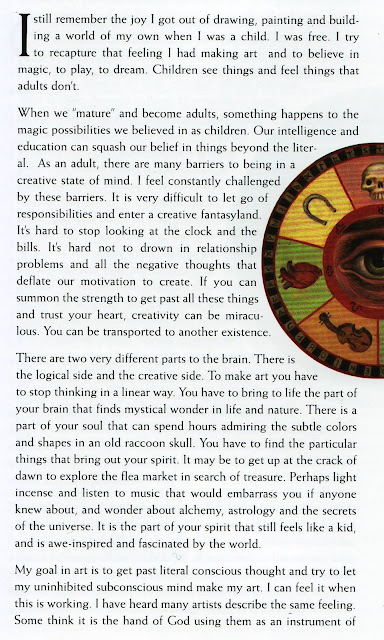



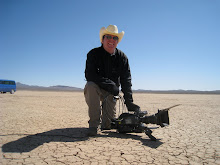


























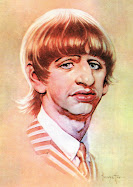






















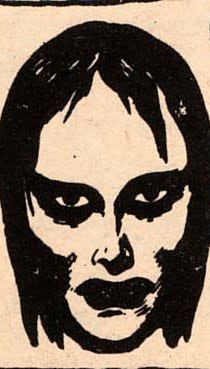









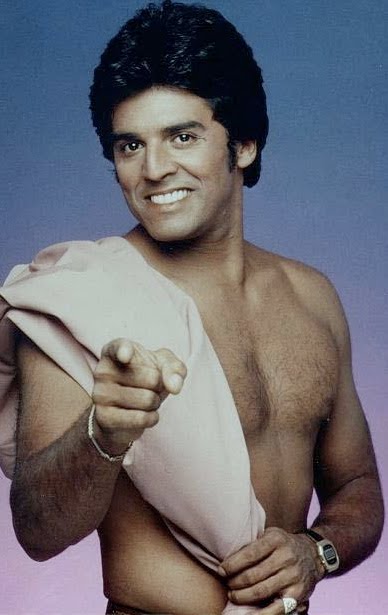









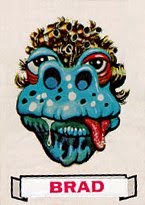























































No comments:
Post a Comment